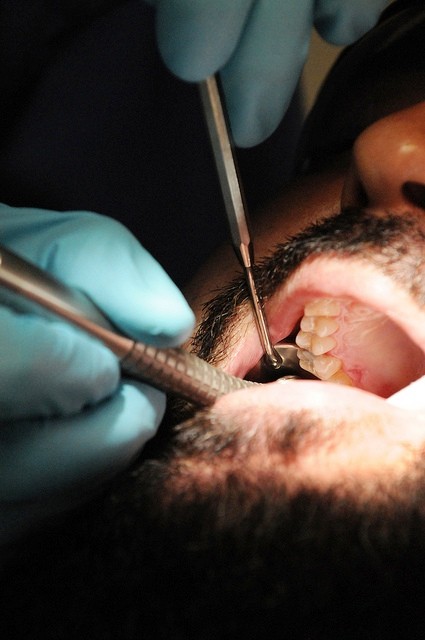Five Minutes of Laser Exposure can Repair Tooth Decay: Study

Mild laser treatment can activate stem cells in the body that help repair decayed tooth, finds a study.
Dental caries and cavities erode the tooth's surface and infect the root. These conditions often require painful and expensive dental treatments that take long to fix. Recently, dental experts from the National Institute of Dental and Craniofacial Research in Maryland found rotten teeth can be revived by exposing them to laser lights for five minutes. For the study, scientists punctured tiny holes in dentine, a part of the teeth that is susceptible to decaying and beamed it with low-power laser light, reports the Daily Mail.
This triggered activation of a chemical in the mouth that signals stem cells to start repairing decayed portion and form new dentine within 12 weeks using body's natural processes. Stem cells are responsible for the rebuilding and restoring of body parts from damage and injury.
"This method does not introduce anything new to the body, and lasers are routinely used in medicine and dentistry, so the barriers to clinical translation are low," said David Mooney, study author and faculty member at the Wyss Institute for Biologically Inspired Engineering at Harvard University, reports the Health Day News.
Furthermore, the laser treatment alleviates the severity of wounds and aids in quick tissue and bone repair. But it would be difficult to reproduce enamel in the hard part of the teeth that is lost by wear and tear.
"I think it would be popular with patients because it would be low-cost and rapid and involve minimal surgery. It would also be popular with the health care providers who have to foot the bill," said Chris Mason, an expert in regenerative medicine from University College London, reports the Daily Mail.
These findings will help replace traditional methods of treating dental diseases like root canal and implants that mainly uses porcelain dentures and metal caps. However, the researchers believe many types of cavities would require to be treated with regular dental procedures like drilling and filling.
More information is available online in the journal Science Translation Medicine.
May 29, 2014 06:37 AM EDT





